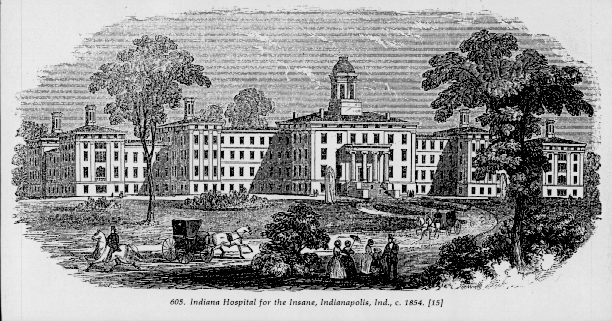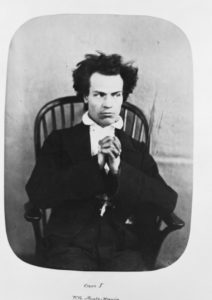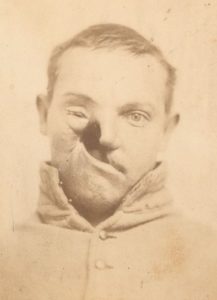
Indiana Hospital for the Insane
In 1884 Dr. Joseph G. Rogers, superintendent at the Asylum for the Insane in Indianapolis, wrote in an article (see last post) that nothing remarkable in either the treatment of insanity or recovery of patients had occurred recently. His suggestions for the primary care of acute (recent) mania were rest and nutrition, with the addition of soothing baths and perhaps a dose of medicine to help the patient sleep. These treatments could just as easily be done at home if a family wanted to–so why would they send their loved one to an asylum?
If patients didn’t immediately recover their sanity, of course stronger measures would be necessary. That’s when medical professionals took on more than most families could comfortably embrace.

William Green, a Patient With Acute Mania, Bethlem Royal Hospital
Rogers, and most other alienists of the time, believed that patients almost always needed their bowels cleared by a good enema, and he suggested using gallon portions if necessary. The enema should be repeated until deemed successful by seeing proof of the “evacuation of the entire canal.” He called this dramatic enema “hydraulic mining so to speak” and what it would have been like for family members to administer can only be imagined. To aid in the complete cleansing of the patient, Rogers also suggested an active purgative of ten grains of calomel with three of gamboge.
Calomel is a mercury compound which could have devastating side effects and actually kill patients who consumed too much of it over time. Gamboge is a strong laxative (that can also expel worms) with side effects that include vomiting, stomach pain, and loss of potassium–which can damage the heart.

Union Soldier Carlton Burgan, Whose Upper Mouth, Palate, Right Cheek, and Right Eye Were Affected by Calomel Poisoning, courtesy National Museum of Medicine and Health
Though laypeople of the time probably wouldn’t have known about these side effects, they might still have felt uneasy giving these stronger kinds of medicines to their relatives. And, if patients needed these stronger interventions, it would be because they were becoming increasing difficult to manage–another reason to send them to an asylum.
Though asylums took much of the care-taking burden off families’ shoulders, they may not have actually given the patient better care. In my next post, I will discuss some of the medicines available to doctors caring for the insane.